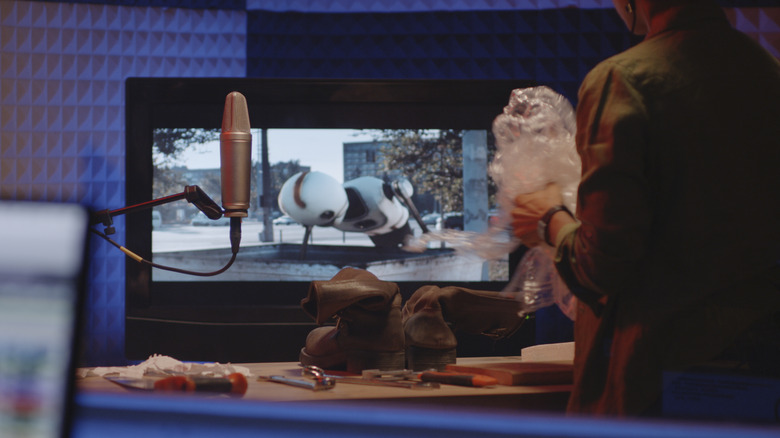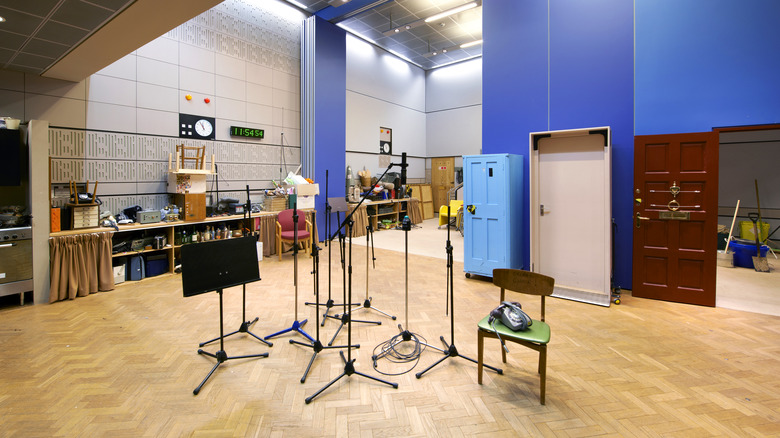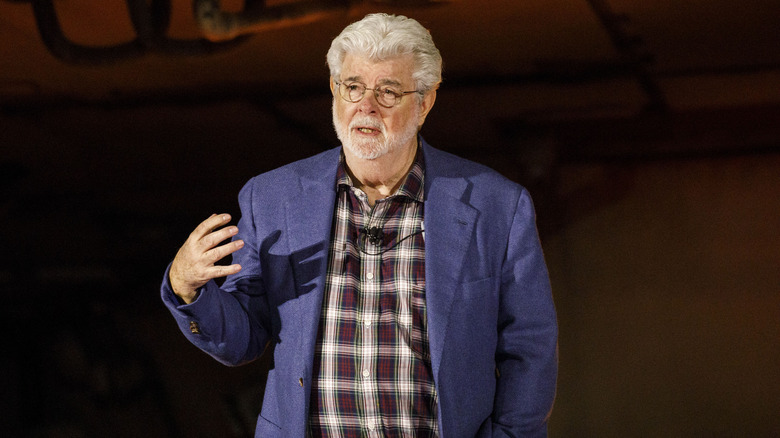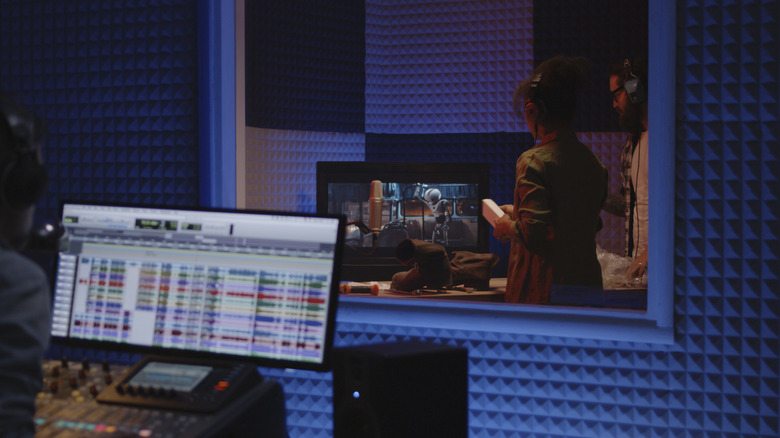What Is A Foley Artist?
Sound is one of the most crucial aspects of film, and one of the most important roles in the creation of sound in film is the Foley artist. But what exactly does a Foley artist do? According to Studio Binder, Foley artists are responsible for creating sound effects for movies and TV shows — specifically sounds that were not recorded during the shooting of a scene. This means that Foley artists don't enter the making of a project until after it's been shot, requiring them to create these sound effects in a studio rather than on a set.
As listed in Studio Binder, the types of sound effects that Foley artists make are wide and varied, including anything that exists in the reality of a movie or TV show. Sounds that they make include but are not limited to real-world noises like footsteps, animal sounds, and that of everyday objects, as well as more fantastical noises like dragon roars, laser guns, and robot whirring.
The man who created the Foley artform
According to Enhanced Media, the idea of combining sound effects with performance has its roots in ancient Greece, when plays were often accompanied by specific sounds that were produced with a variety of techniques, from the actors' masks to using the amphitheaters' own architecture.
However, sound and cinema didn't truly combine until Jack Donovan Foley came along, as stated in Enhanced Media. Born in New York in 1891, Foley grew up to work in sound effects and developed innovative methods for recreating such sounds as footsteps, weather-related noises, and more, helping to shake off film's reputation as a purely silent medium. His approach of including sound effects in motion pictures came from the radio soap operas that dominated the airwaves at the time, wherein voice actors were also joined by various noises produced artificially to help create a more believable sonic world for audiences.
Evolution of the Foley artform
Like any artform, it was quite some time before Foley became more widespread in filmmaking, as per Enhanced Media. Some of the earliest uses of it were in 1925's "The Phantom of the Opera" and 1929's "The Jazz Singer," widely considered to be the first true sound film. At the time, movies had subtitles and title cards to narrate what couldn't be said or heard but were often accompanied by live music. In the following decades, subsequent artists expanded on Jack Donovan Foley's innovations, turning sound effects into an essential part of a film. A film that showcased the importance of sound was Stanley Kubrick's 1960 epic "Spartacus," wherein Jack Foley himself (in his last job, according to FilmSound.org) was brought in to help realize the sounds of marching soldiers.
Since then, the tools and techniques used to recreate sound for TV and film have changed quite a bit. As described in Enhanced Media, digital technology has enabled Foley artists to collect and save sounds in massive libraries, making their jobs easier than ever before. However, the need for new and exciting sounds has not diminished, with many major blockbuster films still relying on Foley artists to force sonic worlds by hand.
The tools of the Foley artist
There is no real standard toolkit for the Foley artist — really, all they need is their imagination and a wide range of pretty much any kind of object, which will vary from artist to artist. As stated in The New Yorker, a few items that are common among Foley artists include celery (the snapping of which is great to mimic the sound of breaking bones) and cabbage (which, when struck, produces a sound perfect for face punches).
Some other Foley artist tools that are outlined by The New Yorker include paper clips and nails to recreate common sounds such as footsteps or pets' paws on a hard surface. Joan Rowe, a Foley artist, described how she uses moist sections of chamois leather: "They sound just like mud. Also, they're excellent for blood. If you want to stab somebody in the chest, and you want to hear the sound of the knife going in." As you would imagine from that statement, sometimes Foley artists get called in to make sounds for some pretty gross and gruesome scenes.
The emotional importance of sound in a film
Sound is one of the most important yet easy-to-miss aspects of a film. Foley requires sound designers to accentuate the emotional element of a film without calling attention to itself, making theirs a largely thankless job. According to The New Yorker, "Star Wars" creator George Lucas has stated that sound is half of the cinematic experience. This may seem like an exaggeration, but consider how everyday noises take on a more sinister air in say, a horror or a thriller film; in the hands of a talented Foley artist, a footstep or door creaking can make a film far more suspenseful.
As stated in The New Yorker, Lucas isn't the only prominent filmmaker who believes in the emotive power of sound — Oscar-nominated director David Fincher is a great admirer of legendary sound designer Ben Burtt's work on "Raiders of the Lost Ark," particularly in the sounds of people getting punched in its fight scenes. However, when it came to making "Fight Club," Fincher wanted something to differentiate the sounds of his film's fight scenes from those in the more bombastic "Indiana Jones" films, stating, "We wanted to make sure that when they were beating on each other it was like punching a sack of potatoes — that it didn't hyperbolize it in a way that made it sexy."
The future of Foley
As digital technology becomes ever more prevalent in the film industry, it may be easy to assume that the future of Foley is in danger. After all, is it really that impossible for a computer to eventually recreate any sound with little more than a typed command? However, the art of Foley seems to be largely safe from digitization. Foley artist Jana Vance told The New Yorker, "I feel like a shoe cobbler. We're still making things with our hands, or with our feet." There's a tactile element of creating sound that computers currently just aren't capable of reproducing.
Not that there aren't efforts to digitize the Foley artform — The New Yorker touches on how artificial intelligence, already widespread in computer-generated imagery, may someday replace the jobs of Foley artists. However, AI still has a long way to go before it can match the skill of a talented sound designer using their ears, imaginations, and whatever objects they can get ahold of. Vance remains hopeful about the need for human Foley artists, stating (per The New Yorker), "The bottom line is, the beauty of Foley is its originality and soul. Each cue, each footstep, even, has the potential for beauty."





